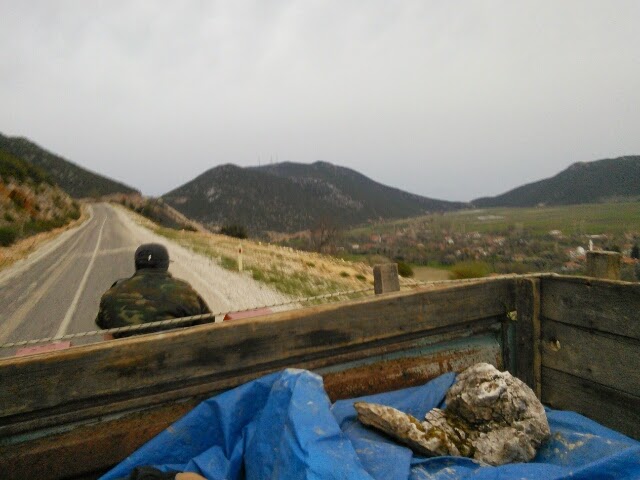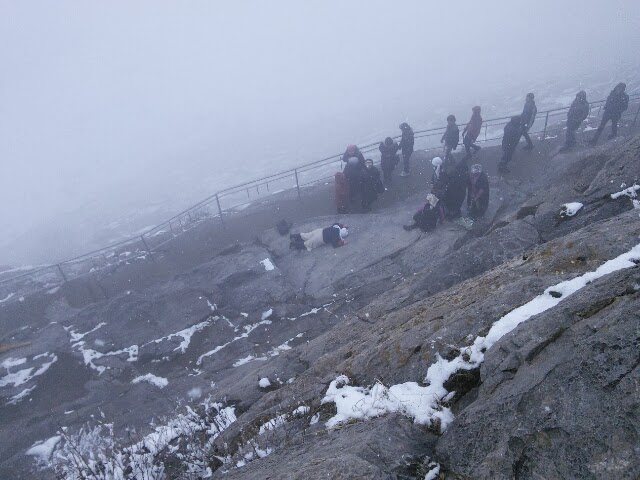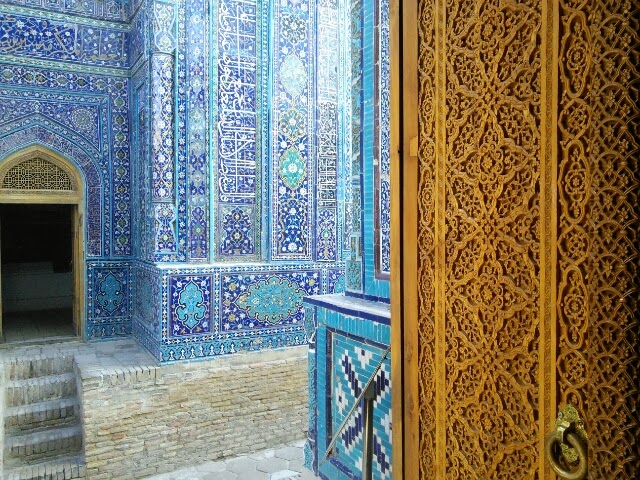Post by Josh, with intro by Hammad
Iran and Russia: two countries we really wanted to visit but could not. Travel warnings and sanctions got in the way. But what luck! Over the last week in Uzbekistan, we have gotten to visit both. We spent two days in Tajik-speaking, dessert-oasis city Bukhara, where we realized Tajik sounds a lot like Farsi and they are preparing to celebrate Nowruz (pronounced Navrus here), the Zoroastrian-inflected Persian New Year. Ancient mosques, medressas, canals, mud-brick walls, courtyards, narrow streets and clay tiles surrounded us. It was something like what I hoped the old cities of Iran might have been. And then, two nights in Tashkent: the fourth most populous city in the former USSR, and still kicking it Russky-style. Picture it: a gleaming metro system with station names like "Kosmonavtlar" (astronauts), police with fluffy hats all around, a thriving ballet, imposing buildings, and of course, borsch. We tried for all we could to see the ballet but the next show was not for two more days. Lots of things were hard to find, or closed, or both. Oh well, isn't that part of life in the former Soviet states?
Ancient road number four: the Silk Road. Between Iran and Russia, this land has seen a slew of different empires, and they stack on top of each other like non (round bread) in a bazaar. Before the trip, the words silk road conjured images of camel caravans and exotic medieval cities with twisty streets. The actual places are much more complicated.

The Silk Road began around 100 BC, when scouts from China made contact with the empires set up by Alexander the Great in Central Asia. This started an incredibly profitable exchange of good in both directions, with caravans crisscrossing the great Mongolian steppes and goods traveling from Venice all the way to Korea. It was an incredibly difficult 4000 mile crossing, though, and its success was completely dependent upon the fortunes of the wealthy empires that anchored and protected it. The stability of ancient Rome, Han China, and the strong Selucid states in central Asia allowed trade routes to develop strongly through the 2nd Century AD; the collapse of Roman power and the weakening of the middle states in the following centuries made crossing the road both unsafe and less profitable. Trade between Constantinople and the Sassanid Empire in the 9th through 12th Centuries brought the road to its iconic golden age. Under the Pax Mongolica of the 14th Century, the cities and trade of the Silk Road again gained prominence, but were now undercut by the cheaper maritime silk road (see Singapore) and gradually fell into decline.
Between these periods of peace, trade, and prosperity, the Road was ravaged by political chaos and warfare, generally as nomadic peoples from the steppes fell on hard times and figured it easiest to survive by sacking their soft city-dwelling neighbors. Samarkand, the glittering jewel of Silk Road stories, was completely destroyed by Ghengis Khan in the 1200s and was only brought back to prominence by the obsessive building efforts of Timur the Lame, another bloodthirsty warlord who destroyed his own share of cities. His great palaces, mosques and madrasas sat on top of the city destroyed by the Khan and within walking distance of the older city of Afrosiab, which was the capitol of the region for a thousand years but fell into decline during the 700s - its eroded mud brick walls still loom behind Timur's creations today. Soviet concrete housing projects and swanky modern tourist hotels make another ring around this. Visiting cities of the Silk Road brings one into contact with all of these layers of time, smashed on top of each other and all deserving of attention.

For the ancient era, Samarkand's bizarre archeological cousin of Afrosiab was our best window into the past. It's currently 400 steeply rolling hills of abandoned dig sites, completely surrounded by city roads and modern neighborhoods. Shepherds guide their flocks over its undulating grassy knolls. Two wild dogs fiercely defended the northwest corner of the area from our curious advances. Archeologists have mapped and excavated temples, palaces, merchant's houses, wells, city walls and gates, and a massive fortified hill castle within the site, but it was all made with mud brick and has eroded back into wildly lumpy hills. Maybe this football-field sized mound was the old merchant's quarter. The taller hill in the back was definitely the castle. Or at least it seems like it was. The only cues that the region was an old city were the irregularity of the hills and the potsherds. The ground was literally covered in them. You could not take a step without crashing fragments of ancient clay several times older than the United States. We wished we could make more sense of the place, but the explanatory museum consisted of two rooms and about that many placards in English. Afrosiab was an intriguing but largely opaque place, hinting at the past but leaving most of it to the imagination.


Our visit to Bukhara was a much more satisfying presentation of the medieval Silk Road. This city was the Capitol of the Samanid Empire in the 10th and 11th centuries and became the center of learning of the Muslim world, filled with glittering mosques, schools, and monuments. These mostly stand today. The city is a living museum, with 140 buildings certified as maintained historical structures from the 9th through 18th centuries. Much of the rest maintains the same character as it did during the late middle ages, with tiny, winding streets and elaborate courtyard houses. Wandering through the tiled squares, in the shadow of ancient mulberry trees and only slightly newer minarets, felt like we were the ones out of place. All we needed were a few more dervishes wandering about and some actual camels in the caravanserais. The monuments and streets were beautiful, while the atmosphere relaxed and mystic.


The trappings of the Road still make themselves felt in the modern towns we have visited. Beneath their Soviet concrete and crumbling roads, the main cities throughout the entire region are basically expanded and modernized Silk Road trading hubs. Strung like pearls along the long mountain valleys that like the region, the towns still have all the diverse languages, peoples, and religions that were brought by centuries of wanderers and profit-seekers. Ancient mosques and mausolea have shown up in every town. Locals speak three or five different languages to interface with all the groups in their communities. Osh boasts that its marketplace is older than Rome, even though no actual building in the market is much older than the 1980s. And Tashkent still runs a thriving if illicit trade of goods between east and west, though they now tend towards electronics.
We have been incredibly fortunate to explore this region and meet its people. So far, this is the place that we thinkould be most interesting to return to - to explore further into the mountains or out into the desert, and to see what other gems these lands have to offer.





























